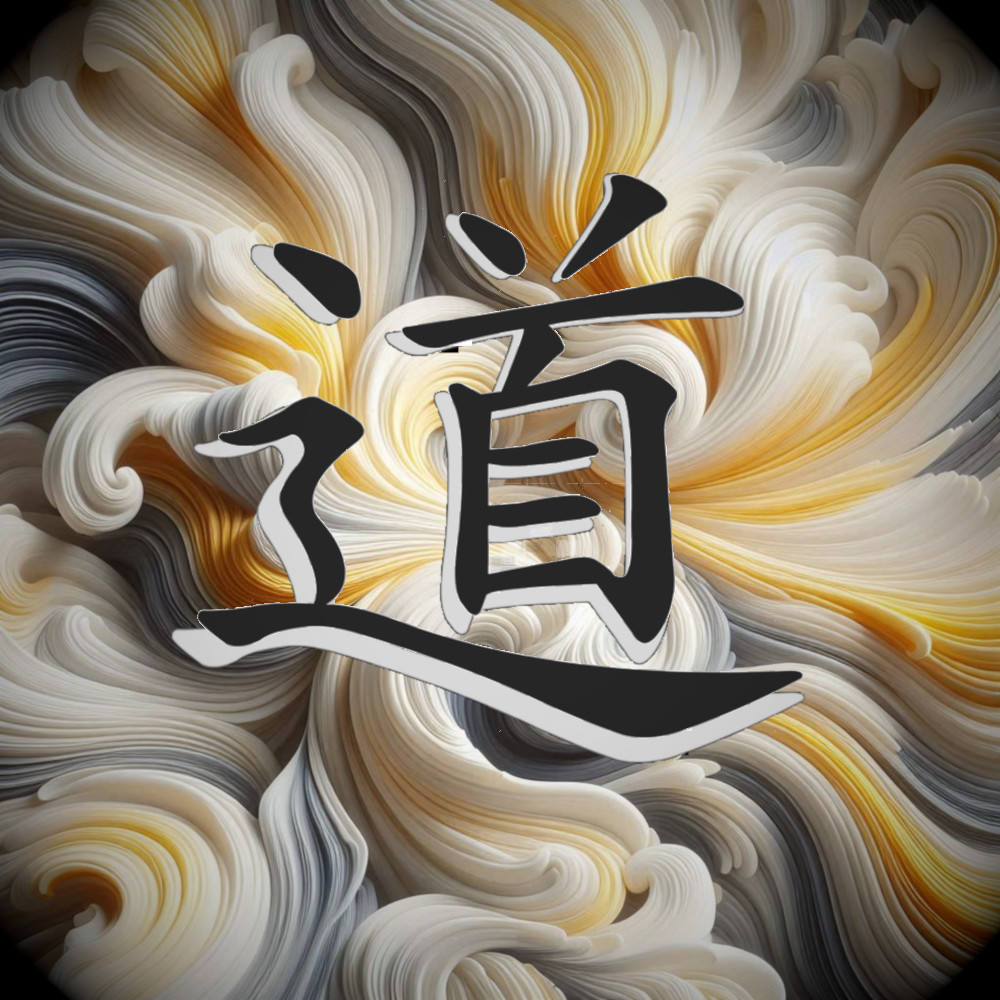 |
Taoism, a Chinese philosophy that explores humanity’s relationship with the natural world, finds its physical embodiment in Tai Chi Chuan. Often categorized as a martial art, Tai Chi Chuan is more profoundly understood as a living demonstration of Taoist principles. The Chen Style Tai Chi Chuan Practical Method further elevates this practice by demanding that each movement be not only theoretically sound but also demonstrably effective. Thus, a practitioner of Tai Chi Chuan must simultaneously engage with Taoist philosophy and physical technique. |
| The foundation of this essay is the lecture delivered by Master Chen in Toronto on October 10, 2010. |
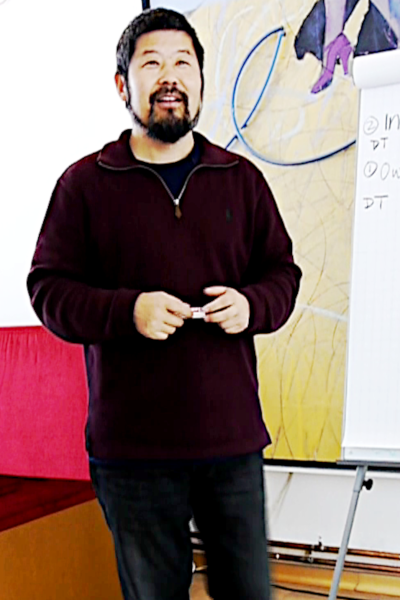 |
|
Introduction
A consistent theme in all of Master Chen’s lectures is the relationship between Taoism and Tai Chi Chuan. For beginners, it is difficult to see how physical techniques relate to such an abstract philosophy. However, after years of practice, one comes to appreciate the necessity of this deeper understanding. This challenge is common when learning rich and complex systems.
| Take mathematics, for example. In high school, students are introduced to algebra, functions, relations, and the basics of calculus—enough to serve the general public. At the university level, mathematical knowledge deepens according to one’s specialization: finance students learn linear programming, engineers study differential equations, and those pursuing mathematics as a discipline explore abstract algebra and foundational theories. Only after encountering higher-level mathematics does one realize how simple and limited high school mathematics was, often wishing they had grasped the deeper meaning of the subject much earlier. |

|
Similarly, many Taiji practitioners diligently train in physical forms. Yet, it is only when they attempt to apply Taiji in practice that they recognize the limitations of their training. These challenges can only be overcome by understanding the theoretical foundations behind their movements.
Master Chen acknowledges the challenges of teaching such a profound and intricate art. He advocates for a traditional Chinese approach, likening it to a “star map“—not a rigid, hierarchical path, but a constellation of guiding lights. Each star, a point of wisdom, gently illuminates the journey, waiting for the practitioner to one day recognize their significance.
Within the vast expanse of the Taiji universe, Taoism shines as one of its grandest constellations, shaping movement, thought, and the very essence of practice.
1. Beyond Translation: Taoism’s Yin-Yang Paradox
Understanding Taoism begins with the foundational work of Taoism, the Tao Te Ching (道德經) by the sage Laozi (老子, 475 BC – 221 BC). The opening lines, “道可道,非常道。名可名,非常名,” often translated as “The Dao that can be spoken of is not the constant Dao. A name that can be named is not a constant name,” have been interpreted countless times in Western languages. However, these translations often fall short of capturing the profound philosophical implications.
To truly grasp Taoist concepts, one must immerse oneself in their cultural and practical context. This initial exploration introduces the fundamental Taoist principle of Yin-Yang (陰-陽), the dynamic balance of opposites. The idea is that defining or labeling something inherently limits and distorts its true nature, transforming the known into the unknown. This paradoxical interplay between Yin and Yang is a core principle of Taoism.
 |
Taoism employs this core idea to create a unique methodology and worldview. Attempting to understand Taoism through the lens of other belief systems, such as mysticism, religion, or science, inevitably falls short. Each belief system has its own internal logic and limitations. For instance, explaining Yin-Yang as a product of a universal life force like qi (氣), or interpreting it through the framework of gods and devils, or equating it to quantum phenomena, oversimplifies its complexity.
While analogies can be useful tools to explain complex ideas by drawing parallels between different belief systems and real-world situations, it’s crucial to recognize their limitations. |
Overextending analogies without considering the unique context of each system can lead to misunderstandings and misinterpretations.
To truly comprehend Taoism, direct engagement with its practices and philosophy is essential. Relying solely on analogies drawn from familiar knowledge systems can obscure the core principles of Taoism. As the Tao Te Ching, a foundational text of Taoism, states: ‘He who devotes himself to learning (seeks) from day to day to increase (his knowledge); he who devotes himself to the Dao (seeks) from day to day to diminish (his doing).’ (為學日益,為道日損。) This highlights the danger of unnecessary actions that can distract from the true purpose of study and practice.
2. Ineffable Yin-Yang: The Essence of Enlightenment
|
The effectiveness and surprising nature of Tai Chi movements are rooted in this Yin-Yang separation. As Master Chen stated, “‘Yin and yang are the two most fundamental elements of the universe. When they merge, the universe becomes Wuji (無極). Merely knowing and physically imitating this principle grants significant power. Thus, we require only one non-human element to make a difference.'” This statement expands upon the concept described in the Tao Te Ching: “The Dao produced One; One produced Two; Two produced Three; Three produced All things. (道生一,一生二,二生三,三生萬物。)” This is why all Tai Chi theory emphasizes the importance of this fundamental principle.
The difficulty in explaining Taoist concepts and Tai Chi actions stems from their deep-rooted connection to truth and reality. As Master Chen stated, “The word [for Taoist understanding] is called enlightenment. But basically it means did you get it or not? If you got it and you just can’t describe it and so the designated verb for that [experience] is [the term] “to be enlightened.” |
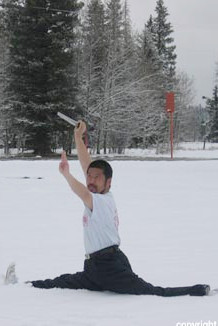 |
The Tao Te Ching echoes this sentiment: “To know and yet (think) we do not know is the highest (attainment); not to know (and yet think) we do know is a disease.” (知不知上;不知知病。) This inherent experiential nature of Taoism and Tai Chi makes verbal articulation challenging, as true understanding often surpasses the limitations of language.
3. The Unrepeatable Path: Embracing the Unique Nature of Taoist Enlightenment
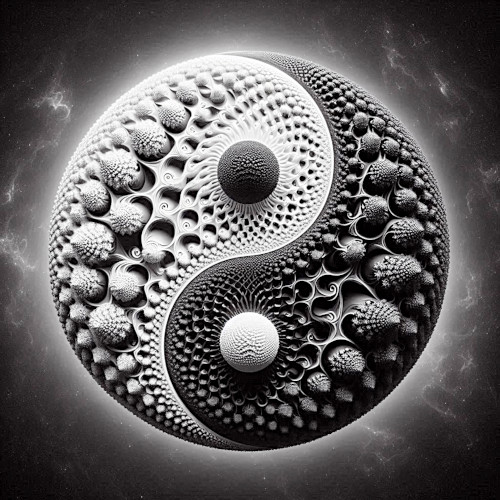
|
Each enlightenment experience is unique. As Master Chen explained, “The true Taoist concept of the universe is that there is not one thing in the universe that’s repeatable. In science, we believe the opposite. So although you have an experience, that’s exactly not the same as his [another person’s] experience … a Taoist does not believe two of them are the same.” Taoism posits that every thing and experience in the universe is unique and unrepeatable. This contrasts with scientific principles, which often seek patterns and repeatable phenomena. A Taoist perspective suggests that even identical things or experiences are distinct for different individuals. |
The distinctiveness of a thing or experience cannot be fully explained through a scientific lens by arguing that each thing or experience is different due to time or frames of reference. This scientific approach is inherently limited. As Master Chen argued, “Quantum physics, according to Taoism, is totally, totally a lie. Because [in Taoism, reality] it’s not like that. It’s just quantum physics is physics. And using totally physical physics words to describe things [that] physics cannot describe.”
Master Chen further discussed the uniqueness of individual events or object from a Taoist perspective as follows: “It [Each event or object] is that it’s not different. It [Each event or object] is not the same. So in Taoism, we have a total understanding and requirement is that when you say it [event or object] is not the same, it doesn’t mean it [event or object] is different. … in modern terms, like you are a scientist, your mind will only accept if it [event or object] is not black, then it has to be white. So in [contrast for] Taoism, if it’s not white, it doesn’t have to be black.”
Master Chen continues “And that [the one differential factor] is the only thing we know. But in reality, there are billions of things [known and unknown to differentiate between events or objects]. … So it [this uniqueness] is strange. And [from a different perspective] it’s not strange, it’s just at this time in the universe, we just cannot understand it [the reason for this uniqueness]. It’s just the Taoist method is that do not deny the things you don’t understand. You can only just give it there [accept them] and say this is something like that.”
The classic Taoist text, Zhuangzi (莊子, 350 BC-250 BC) states “Therefore, always without desire, in order to observe its wonder.” (“故常無欲,以觀其妙”) This suggests a state of being where one is free from desires or attachments, allowing them to perceive the true nature of the universe and oneself with greater clarity.
4. You’re Never a Dog: The Limits of External Frameworks in Taoist Thought
| Master Chen expanded on this idea of incompatible philosophical systems by using the example of understanding a dog. Master Chen said, “Right now, you’re a human. All of a sudden, you discover a way to describe how dogs feel…that claim is a lie. Because you don’t really know how dogs feel. You are not a dog and never will be. But everybody believes your initial claim, wow, he discovered that dogs don’t feel like us humans. And when you kick them, they don’t feel like when I kick you. You’re right. But to say that you understand it, how a dog really feels, that’s wrong. Do you understand? It’s like you’re never a dog.” |
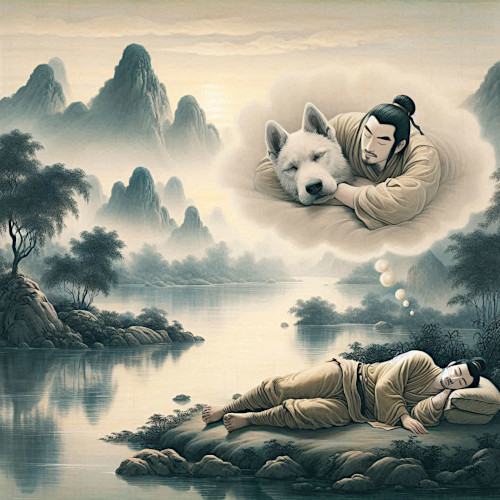 |
| This example illustrates that one cannot truly understand the subjective experiences of other beings.While we may observe their behavior and draw inferences, we cannot directly experience their actions and reactions. Therefore, any claim to fully understand another perspective is ultimately unfounded. | |
A consistent philosophical framework is crucial. As Master Chen emphasized, “So when you use a scientific method to analyze something [a problem in Taoism], you are scientific … You say that you are using modern physics. But now you say that it’s not [since the problem is in Taoism]. It’s [the problem is] still in the Taoist way … [but] You are in that [scientific] frame. You didn’t jump out of that. ” In the opening chapter of classic Taoist text, Zhuangzi (莊子, 350 BC-250 BC), a striking comparison is drawn between the colossal mythical Peng (鵬) bird and the limited perspectives of a cicada and dove. The text underscores this contrast: “The knowledge of that which is small does not reach to that which is great; (the experience of) a few years does not reach to that of many.” (小知不及大知,小年不及大年。) Logical extensions or borrowed philosophical notions cannot offer superior insights into Taoist quandaries.
Taoism like any other philosophical system is self consistent and internally logical. As Master Chen explained, “[Taoism understands reality by] using a method, a methodology, [and it is] systematic. [Taoism] like our [conventional view] of looking at the universe [which] is [also] systematic. [Taoism is consistent]. Like next year, you ask me [for a solution based on Taoism], [the answer] is the same. You ask another [Taoist, the answer] is the same. In that way, it’s systematic, it’s logical, but it’s not scientific. Because [the term] scientific has a particular meaning. It’s for the people who went to the university [and trained to solve problems in a particular way].”
Employing alternative knowledge systems does not enhance one’s comprehension of the Taoist system. As Master Chen stated, “There isn’t anything [analogy] closer [to explain Taoism]. That’s the difficulty [in understanding Taoism for the novice]. And that’s why it [the study of Taoism] is a real pursuit, and yet very few people get it [or reach enlightenment].” The path to understanding Taoism lies in practicing Taoism, not in attempting to comprehend it through other knowledge systems.
5. Dynamic Pairs in Motion: Unveiling Taoist Action and Enlightenment
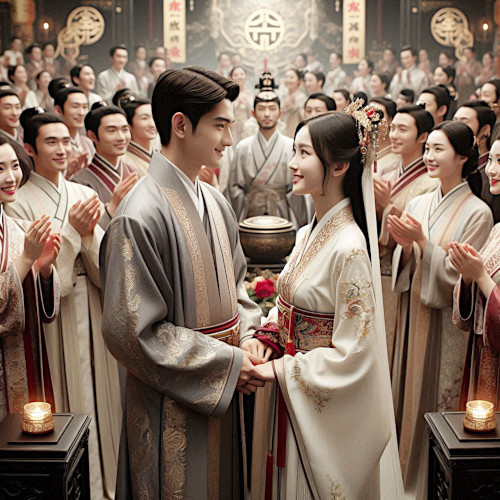
|
The concept of Yin-Yang was expanded upon by Master Chen as follows: “The Chinese found symmetry, pairs. But every pair is given a different verb. So it’s like saying, [a pair] man and women, they marry each other. Yin and yang resolve each other. [Top and bottom follow each other. Left and Right should look at each other.] So the word [verb] is ‘marry’ for men and women. The word [verb] for Yin and Yang is ‘to resolve each other’. The [verb for] top and the bottom is that ‘they follow each other’. [The verb for Left and right is ‘look at each other’.] … the important thing is not what that [verb] means. |
The important thing is that word [verb] actually means [to] relate to [that symmetrical pair]. …So if you use a universal verb, it [the entire proposition] means man and woman should relate to each other in the sense of getting married. [Yin and Yang should relate to each other via resolution]. Top and bottom must relate to each other [by following each other] so that they don’t become vertically stiff. Left and right should look at each other … in the sense of [when side] one opens, one [,the other side,] closes.”
Taoists identified pairs of opposites (as denoted by nouns) that are linked by specific actions (as described by verbs) to express their mutual interactions. However, the actions (verbs) should not be understood by their literal meanings, but rather as shorthand for the dynamic relationships between pairs. Applying the same Taoist logic to find pairs of complementary opposites, each action also has an implied meaning.
The logic is that everything exists in complementary pairs, and this applies to objects as well as to actions. For example, “Man and woman, they marry each other” means they are single. “Yin and yang resolve each other” means they must reject each other. “Top and bottom follow each other” means they must disregard each other. “Left and right should look at each other” means they must ignore each other. These relationships may appear contradictory, but they follow from Taoist observations.
Man and woman, though married, must still exist as individuals. Yin and Yang’s resolution and rejection create a split. Top and bottom must relate to each other by moving but disregard each other by not moving in the same direction. Left and right looking at each other means both sides must act simultaneously but ignore each other because when the left side opens, the right side closes. This concept has practical implications in Tai Chi Chuan.
Master Chen used the following example to demonstrate Tai Chi Chuan as applied Taoism : “…upper and lower body follow each other. It means they never follow each other.” In Tai Chu Chuan a push on the upper body from one direction allows the leg to move in the opposite direction. Conversely, moving the leg in one direction means the body must move in the opposite direction.
| Continually acting and moving according to Taoist principles is the only route to achieving Tai Chi proficiency. Master Chen said, “… the problem is once you tune into this [Taoist action], your whole body is enticed in terms we say you do not live in this dimension because there’s not one move in your body that’s the same as other people. They use that word Píngfán (mundane, 平凡) [to describe the actions of normal people]. If you tune into the Tai Chi, your body is outside of the lay world. The lay world means everything [action] is just like everything else. And yours [behavior] will act differently. ” Master Chen continues “… it (Taoist action) is totally physical. But it’s really subtle and more difficult [to achieve]. So …[what we accomplish this action] we use another word to describe it. The word is called enlightenment.” |
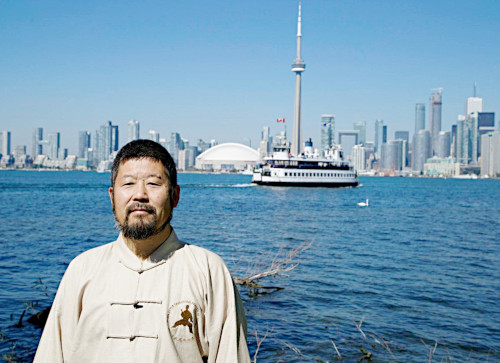 |
Истинная жизнь проживается, когда происходят крошечные изменения
 |
Some students, upon recognizing the significance of Taoism, may find themselves veering away from the Practical Method path, becoming overly immersed in its abstract philosophies. While these ideas are undeniably intriguing and thought-provoking, their direct impact on Taiji practice—at least initially—can be limited.
Taoism has been the subject of over a thousand years of historical discourse, beginning with the Tao Te Ching, a foundational text dating back 2,400 years to the late 4th century BC. Today, millions of practitioners worldwide seek enlightenment, yet the path to true understanding remains elusive. Why is that? Are there secrets still waiting to be uncovered? |
To illustrate my perspective, I turn to mathematics. How does mathematics progress? It evolves through the identification of problems and the pursuit of solutions. Mathematics is deeply practical—it applies concepts to real-world challenges. And, crucially, learning mathematics requires active participation: you must do the exercises, solve the problems, engage with the material.
Similarly, contemplating Taoism is merely the first step toward enlightenment. To truly embody its principles, one must actively practice the system of Tao. Taiji serves as a physical manifestation of these Taoist ideas. As Master Chen states, “… no more than 5% of your time should be spent thinking, reading, and analyzing. The rest of the time must be dedicated to practice.
And yet, here I am, pouring time into this essay when I should be practicing Yilu. Perhaps I am still too píngfán (平凡).


